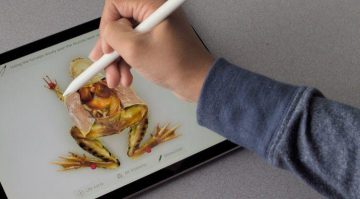Originally posted by Vincent Dong on January 15, 2019
Many people believe that Augmented Reality (AR) technology has the great potential to introduce new ways and methods of teaching and learning and will transform the conventional educational process. Here is an outstanding example of how AR can provide an immersive learning experience.
Froggipedia is an interactive AR learning app which helps learners explore and discover each phase of the life cycle and intricate anatomical details of a frog. With this APP, we can observe how a frog turns from a single-celled egg in water to a full-grown frog. We can further dissect and observe the complex structure of its organ systems right on our iPad Pro using an Apple pencil.
Not many people may have the conditions nor are willing to personally dissect a frog to learn related knowledge. Instead, using an Apple Pencil to peel the skin off a virtual frog is a less gruesome way and cause no harm to real frogs! Capabilities and experience of AR technology demonstrated by Froggipedia may make classes more engaging and information more apprehendable. You can find more AR Apps from AppStore, such as Brainapse (explore the structure and functions of the human brain) and Plantale (observe the growth stages of a plant).

As an educator, I strive to create meaningful learning experiences for my students. I would classify a meaningful learning experience as one in which students are immersed in the learning environment. AR technology appears to have great potential in the classroom by combining the elements of real and virtual worlds. While watching this video a thought came to mind. In my Anatomy lab, if I had the opportunity to engage in this activity prior to the dissection process, it would’ve created a richer learning experience. Using an unclear black/white diagram to guide the dissection process added an extra challenge to the task. I felt very unsure whether I had located the correct anatomical structures. Though I’d have preferred to bypass the dissection process altogether, I would’ve felt more confident and well-informed going into the lab having experimented with this piece of AR technology.